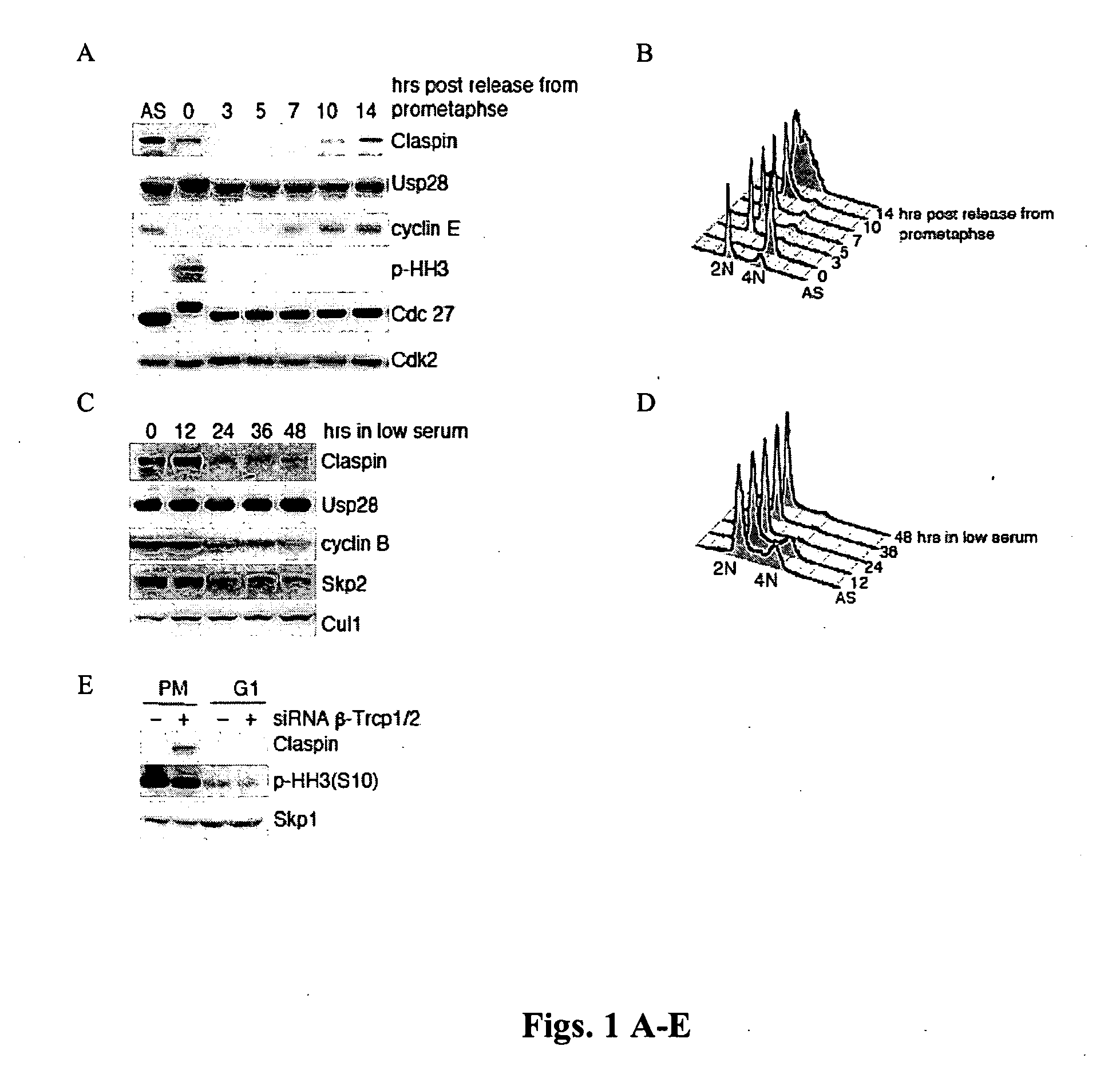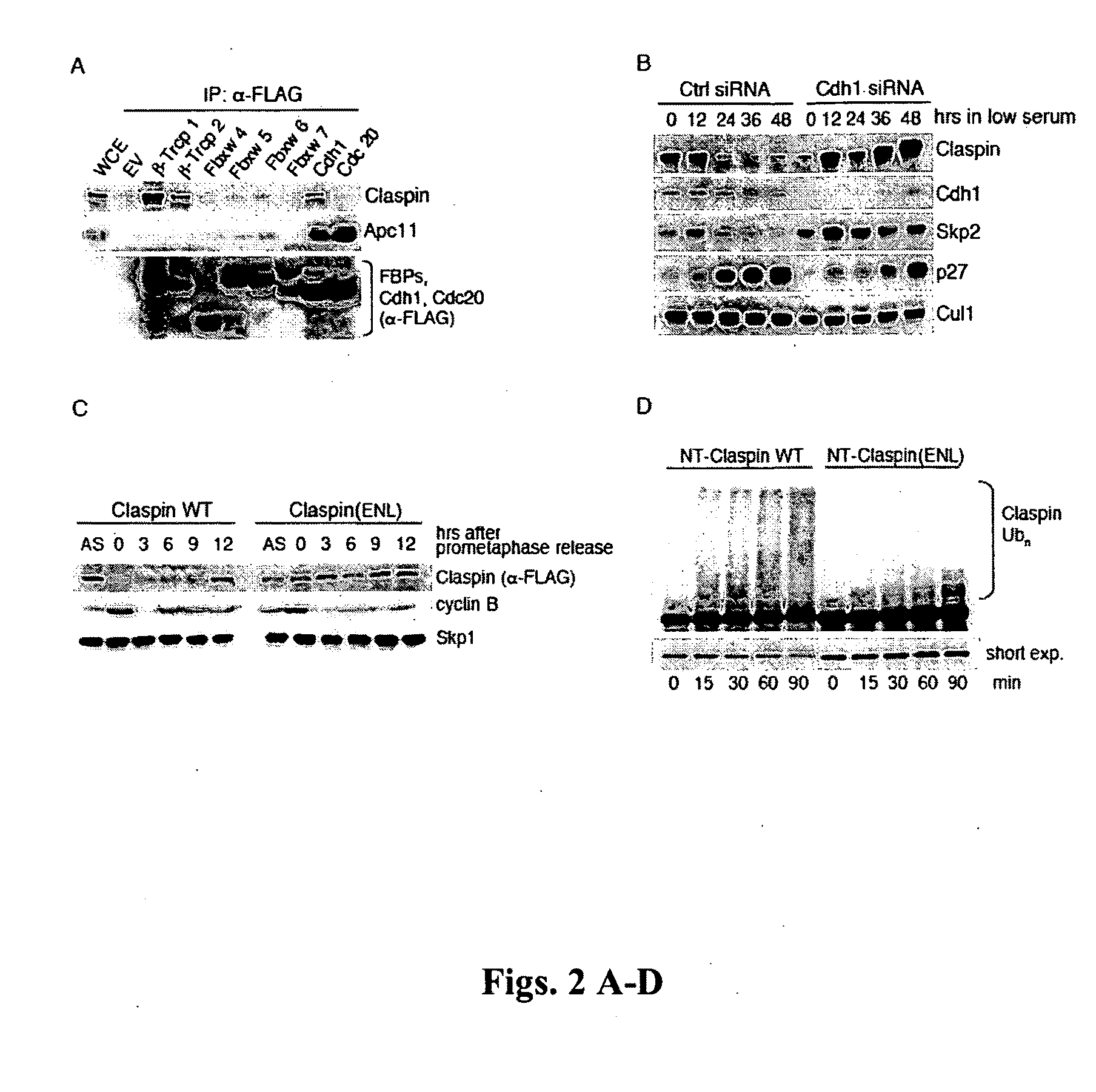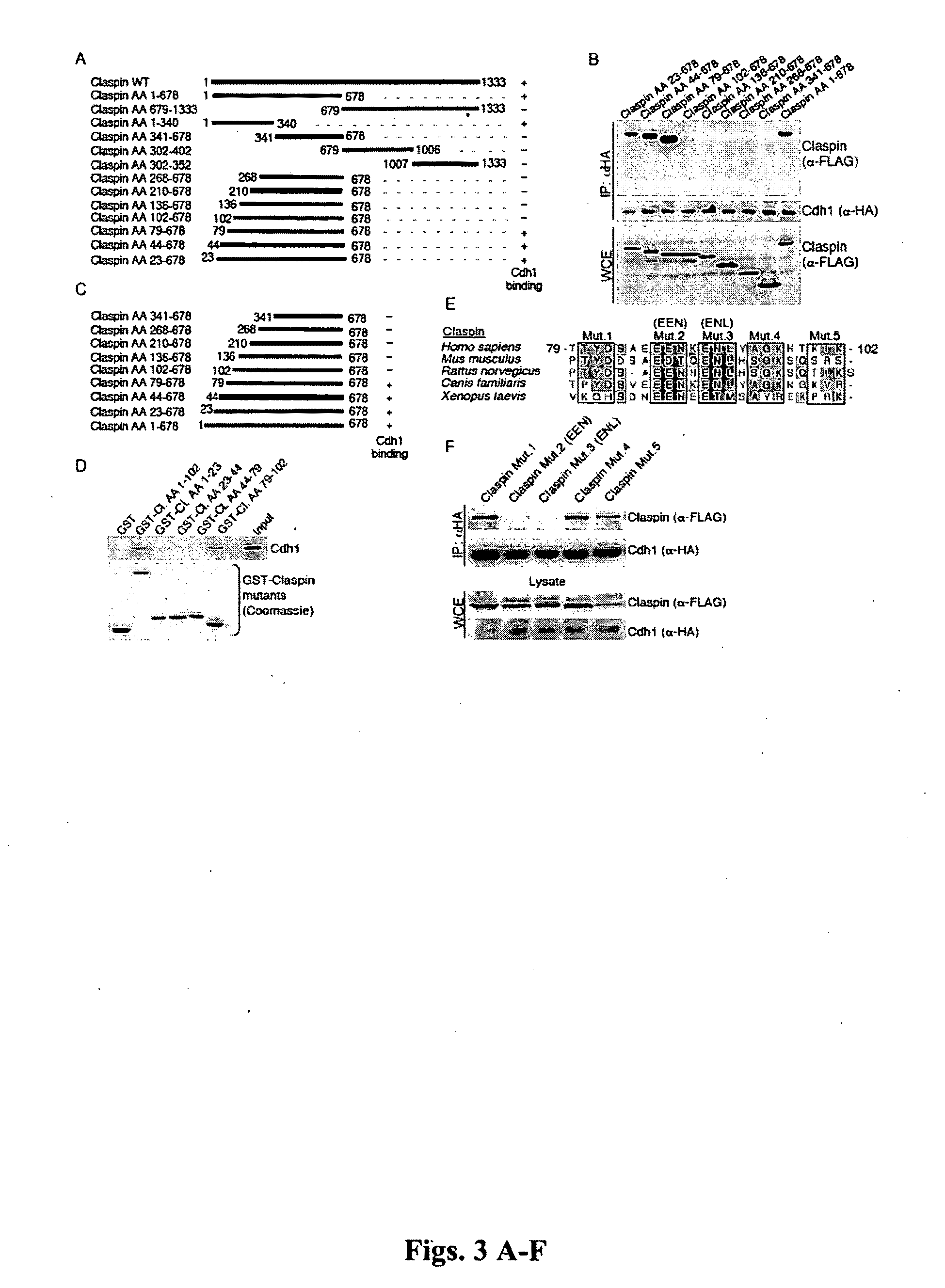Modulating the cdc14b-cdh1-plk1 axis and methods for sensitizing target cells to apoptosis
a technology of cdc14b-cdh1 and cdc14b-cdh1 is applied in the field of modulating the cdc14b-cdh1plk1 axis and methods for sensitizing target cells to apoptosis. it can solve the problems of abnormal degradation of negative regulators (tumor suppressor proteins), cell proliferation too quickly, cancer, etc., and achieve the effect of increasing the amount of plk1 protein
- Summary
- Abstract
- Description
- Claims
- Application Information
AI Technical Summary
Benefits of technology
Problems solved by technology
Method used
Image
Examples
example 1
[0197]Claspin is a Substrate of APC / CCdh1 in the G1 Phase of the Cell Cycle.
[0198]It was previously known that the levels of Claspin oscillate throughout the cell cycle (Mailand et al., 2006; Mamely et al., 2006; Peschiaroli et al., 2006). The highest Claspin expression levels are observed in S phase and early G2, and levels decrease thereafter, becoming almost undetectable during mitosis and the following G1 phase, as shown in FIGS. 1A-E. In FIG. 1A U2OS cells were released from a prometaphase arrest (indicated as time 0) and collected at the indicated times. Protein extracts were analyzed by immunoblotting with antibodies to the indicated proteins. (AS, asynchronous cells). FIG. 1B shows cell cycle profiles of the cells used in the experiment shown in FIG. 1A as determined by flow cytometry.
[0199]For the experiments shown in FIG. 1C, T98G cells were switched to culture media containing 0.02% FBS to arrest them in G0 / G1. Samples were collected at the indicated times after the begin...
example 2
[0217]Upon DNA Damage in G2, Usp28 Protects Claspin, but Not Plk1, from APC / CCdh1-Mediated Degradation
[0218]Usp28 deubiquitylates and consequently stabilizes Claspin in response to DNA damage (Zhang et al., 2006). After genotoxic stress, the recognition of Claspin by the SCFβTrcp ubiquitin ligase is impaired due to the inhibition of Plk1 (Mailand et al., 2006; Mamely et al., 2006; Peschiaroli et al., 2006; Smits et al., 2000). Under these conditions, Claspin is continuously ubiquitylated via an unidentified ubiquitin ligase that is different from SCFβTrcp. A G2 phase-specific reactivation of APC / CCdh1 after DNA damage has been described in vertebrates (Sudo et al., 2001), but the reason for this reactivation is not known. The present experiments confirm that Cdh1 re-associates with Cdc27 (an APC / C core subunit) in human G2 cells subjected to genotoxic stresses, and that this APC / CCdh1 is active (FIGS. 5A-I).
[0219]FIG. 5A shows results after HeLa-S3 cells were synchronized at G1 / S us...
example 3
[0235]Cdh1-Dependent Degradation of Plk1 is Required for an Efficient DNA Damage-Induced G2 Checkpoint
[0236]A destruction box in Plk1 is required for the APC / CCdh1-dependent degradation of Plk1 during late M and in G1 (Lindon and Pines, 2004). A stable Plk1 mutant [Plk1(R337A,L340A)] was generated to investigate the biological function of Plk1 degradation in response to DNA damage in G2. U2OS cells were retrovirally infected with either wild type Plk1 or Plk1( Plk1 R337A, L340A) (i.e., the mutant Plk1) were synchronized in G2, pulsed for one hour with doxorubicin, and followed for an additional three hour period. These results showed that Plk1(R337A,L340A) was not degraded following treatment with doxorubicin, whereas a significant decrease in the levels of wild type Plk1 was observed (FIGS. 8A, B, C, and D). The difference in Plk1 levels corresponded to the difference in the half-lives of wild type Plk1 versus Plk1(R337A,L340A) (FIG. 8E, F). This finding shows that DNA damage-induc...
PUM
| Property | Measurement | Unit |
|---|---|---|
| molecular weight | aaaaa | aaaaa |
| molecular weight | aaaaa | aaaaa |
| molecular weight | aaaaa | aaaaa |
Abstract
Description
Claims
Application Information
 Login to View More
Login to View More - R&D
- Intellectual Property
- Life Sciences
- Materials
- Tech Scout
- Unparalleled Data Quality
- Higher Quality Content
- 60% Fewer Hallucinations
Browse by: Latest US Patents, China's latest patents, Technical Efficacy Thesaurus, Application Domain, Technology Topic, Popular Technical Reports.
© 2025 PatSnap. All rights reserved.Legal|Privacy policy|Modern Slavery Act Transparency Statement|Sitemap|About US| Contact US: help@patsnap.com



